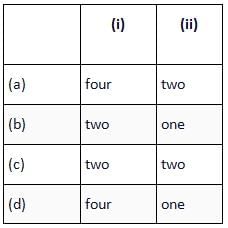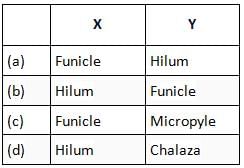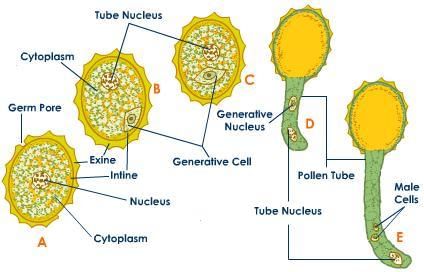Biology: Topic-wise Test- 5 - NEET MCQ
30 Questions MCQ Test - Biology: Topic-wise Test- 5
A dithecous anther consists of ____(i)_______microsporangia, _____(ii)_______ in each lobe.


Read the given statements and select the correct option.
Statement 1: The tumour inducing plasmid (Ti plasmid) acts as a cloning vector in recombinant DNA technology.
Statement 2: The Ti plasmid which is used in the mechanisms of delivering genes to a cell remains pathogenic.
Statement 1: The tumour inducing plasmid (Ti plasmid) acts as a cloning vector in recombinant DNA technology.
Statement 2: The Ti plasmid which is used in the mechanisms of delivering genes to a cell remains pathogenic.
Assertion: In monosporic development, all four megaspores produced from the megaspore mother cell (MMC) do not contribute to the formation of the female gametophyte.
Reason: Monosporic development results in the formation of four functional megaspores.
Number of nuclei participating in double fertilisation is?
Which of the given statements is correct in the context of visualizing DNA molecules separated by agarose gel electrophoresis?
A ladder is used in Gel electrophoresis as it helps in _________.
RNAi is used to produce resistance against the nematode____.
A typical angiospermous ovule is attached to the placenta by means of a stalk called X. Body of the ovule fuses with X in the region called Y. Identify X and Y.

Bt corn has been made resistant from corn borer disease by introduction of the gene
The group of letters that form same words when read both forward and backward are called?
Fragrant flowers with well developed nectaries are anadaptation for
Origin of replication is the specific DNA sequence on chromosome that which is responsible for:
In which of the following plants endosperm is completely used up by developing embryo?
Production of large scale recombinant products can be done in _________.
DNA fragments move towards the anode during gel electrophoresis. This is because _________.
Steps involved in genetic engineering are:
1. Maintenance of introduced DNA in the host.
2. Transfer of DNA in its progeny.
3. Identifying DNA with desirable genes.
4. Introduction of identified DNA into the host.
The component which is not required in PCR is _______.
______ of the pollen grain divides to form two male gametes.
Which one of the following is not used as bio-fertiliser?
The particles used to coat with DNA in Biolistic gun is of:















